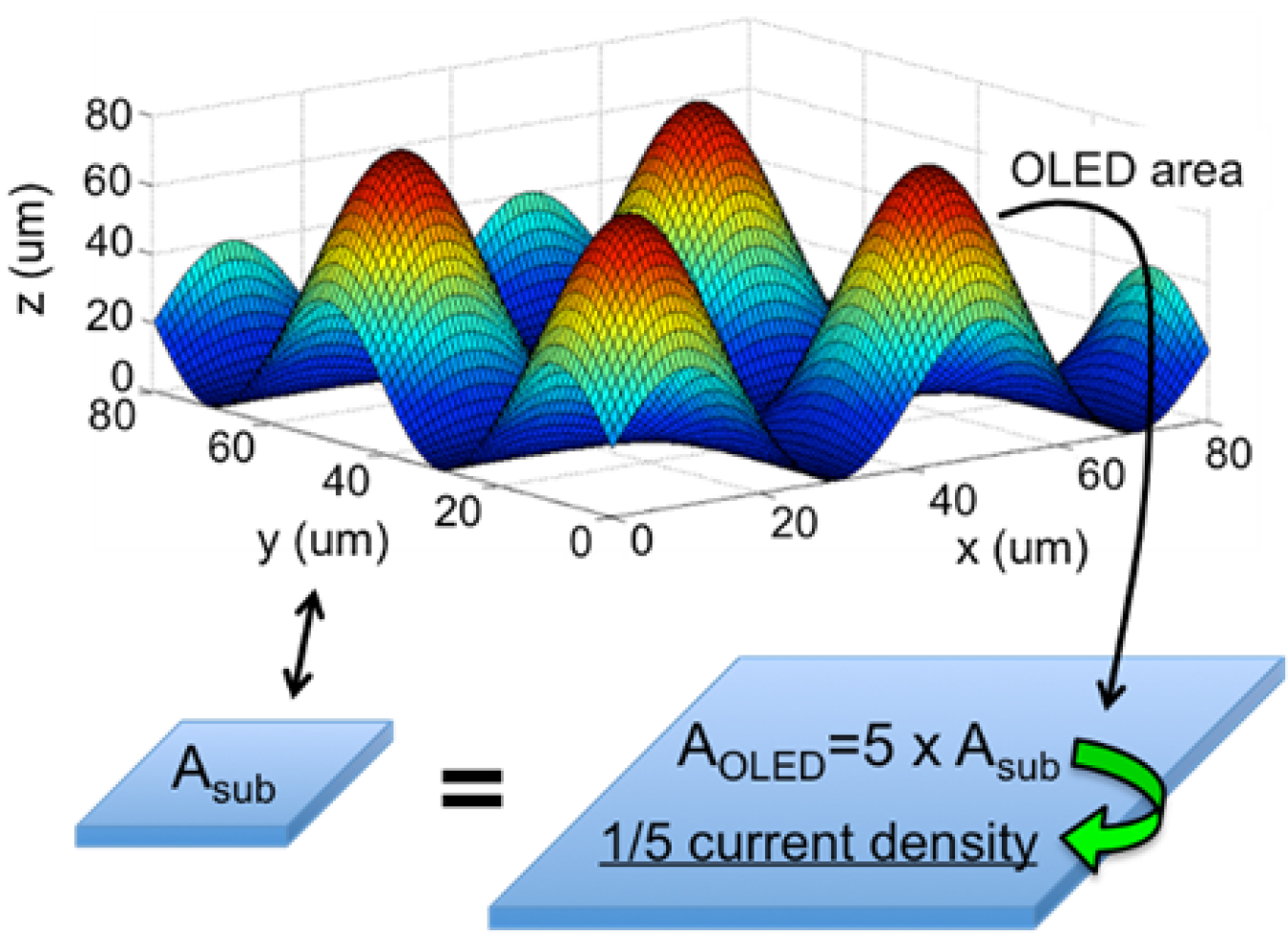Lead Performer: Pennsylvania State University – University Park, PA
May 31, 2022Lead Performer: Pennsylvania State University – University Park, PA
Partners: OLEDWorks LLC, University of Michigan
DOE Total Funding: $1,356,202
Project Term: October 1, 2021 – February 28, 2025
Funding Type: Buildings Energy Efficiency Frontiers & Innovation Technologies (BENEFIT)
Project Objective
Efficiency and reliability are key ongoing challenges for organic light-emitting diode (OLED) lighting. Both metrics improve with decreased current density. Pennsylvania State University is teaming with OLEDWorks and University of Michigan to develop a path to fabricate OLEDs on substrates with high aspect ratio, sub-mm surface relief patterns. By packing more microscale OLED active area per unit of macroscale panel area, a given target luminance is maintained with lower device current density, thereby enabling significant improvements in both efficiency and lifetime.
The team will develop low cost, high aspect ratio substrates along with a reliable path to conformally coat them via both vacuum thermal evaporation and organic vapor phase deposition techniques. The team will demonstrate commercially relevant, stacked white OLED devices with a range of area enhancement factors, evaluate their efficiency and lifetime, and demonstrate a path to scale the technology for high volume manufacturing in production coating systems.
Project Impact
This work will lead to OLED lighting panels with higher efficiency, reduced operating voltage, and longer lifetime that meet the 2025 performance targets set by DOE (as detailed in the 2019 DOE SSL R&D Opportunities document).
Contacts
DOE Technology Manager: Wyatt Merrill
Lead Performer: Chris Giebink, Pennsylvania State University
Related Publications


